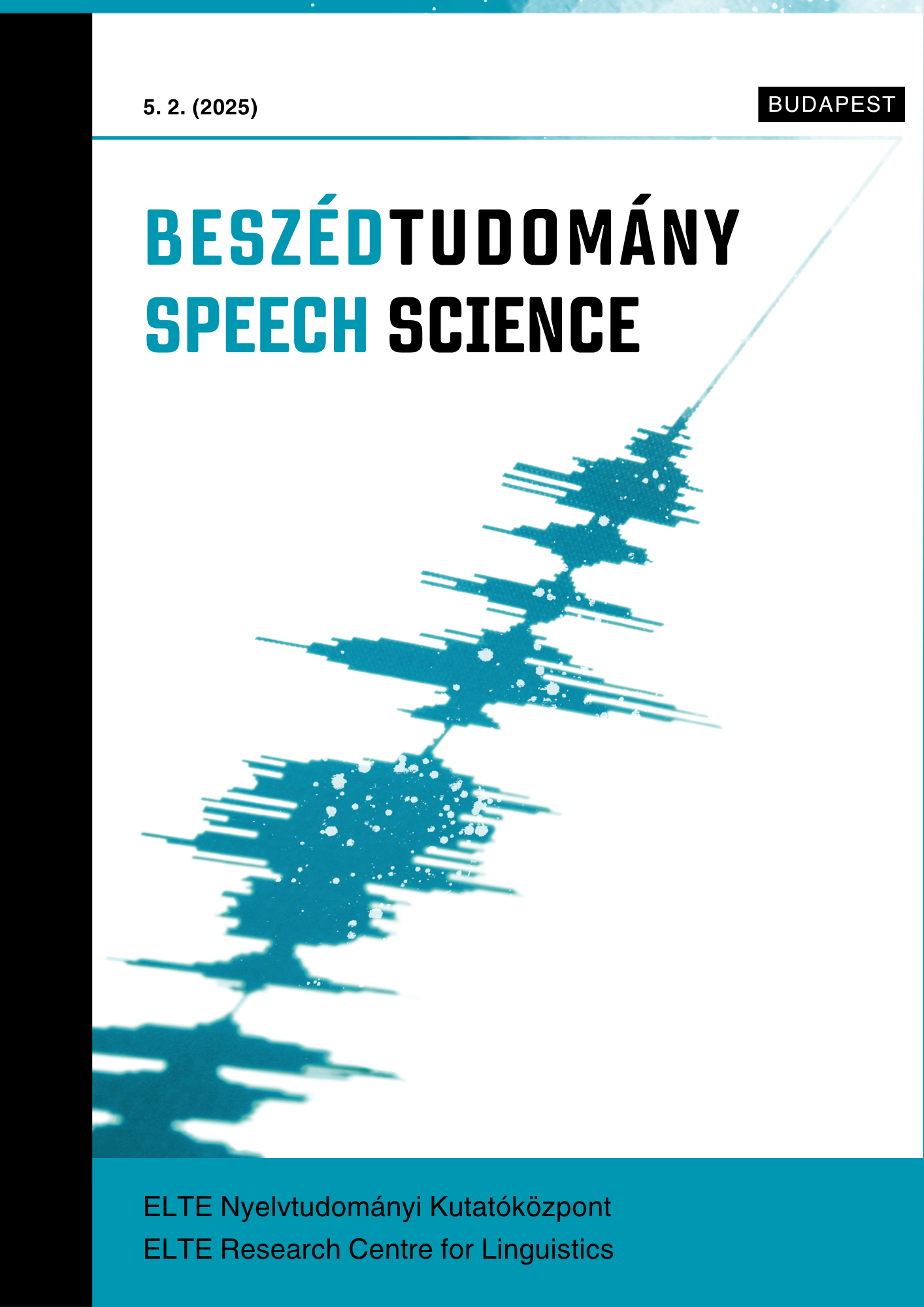Az izolált mandarin kínai lexikai tónusok akusztikai elemzése kínaiul tanuló magyar anyanyelvűek ejtésében
Absztrakt
The aim of the experiment is to provide an acoustic phonetic investigation on how Hungarian learners of Mandarin produce isolated Chinese lexical tones. In Mandarin Chinese (MC) four lexical tones are contrasted: high level Tone 1 (T1), rising Tone 2 (T2), low falling-rising Tone 3 (T3) and falling Tone 4 (T4). These four tones are not exclusively differ by their F0 curve, but their duration also serves as an acoustic cue at differentiation. The duration rises among tones in the following order: T4<T2<T1<T3. The primary focus of the study is to acoustically compare L2 learners and MC natives’ production by two acoustic characteristics: the duration of the lexical tones, as well as the shape of the f0 curves. The production of two L2 learner groups (beginners, advanced learners) were compared to a native MC control group (8 speakers per group, 24 speakers in total, all women). Speakers were asked to read CV structured meaningful words (ma syllables), characterized by the four analysed lexical tones. The acoustic analysis included the comparison of the duration of the vocalic section, as well as contrasting the individual tonal realizations’ f0 contours among the three speaker groups. The results show that both L2 learner groups produced Mandarin lexical tones with the same durational characteristics, with one exception: advanced learners produced T4 with a significantly shorter compared to the native pattern, possibly due to hyperarticulation. The production of the high level T1 did not pose any difficulies to neither L2 learner group, whereas beginners realized the T2 contour with a significantly lower minimal f0 leading to a steeper rising phase relative to the native curve. Advanced learners’ T2 was shaped identical with the native curve. As for T3, both L2 learner groups produced a compressed f0 range compared to MC native realizations. Last but not least, the domed f0 pattern of T4 posed problems to beginners, whose producion was characterized by a linear pattern instead of the convex curve observed in natives’ production. The significance of the study is that, to the author's knowledge, it is the first analysis that provides statistically validated results on the acoustic comparison of isolated lexical tone production in the production of Hungarian learners of Mandarin.




